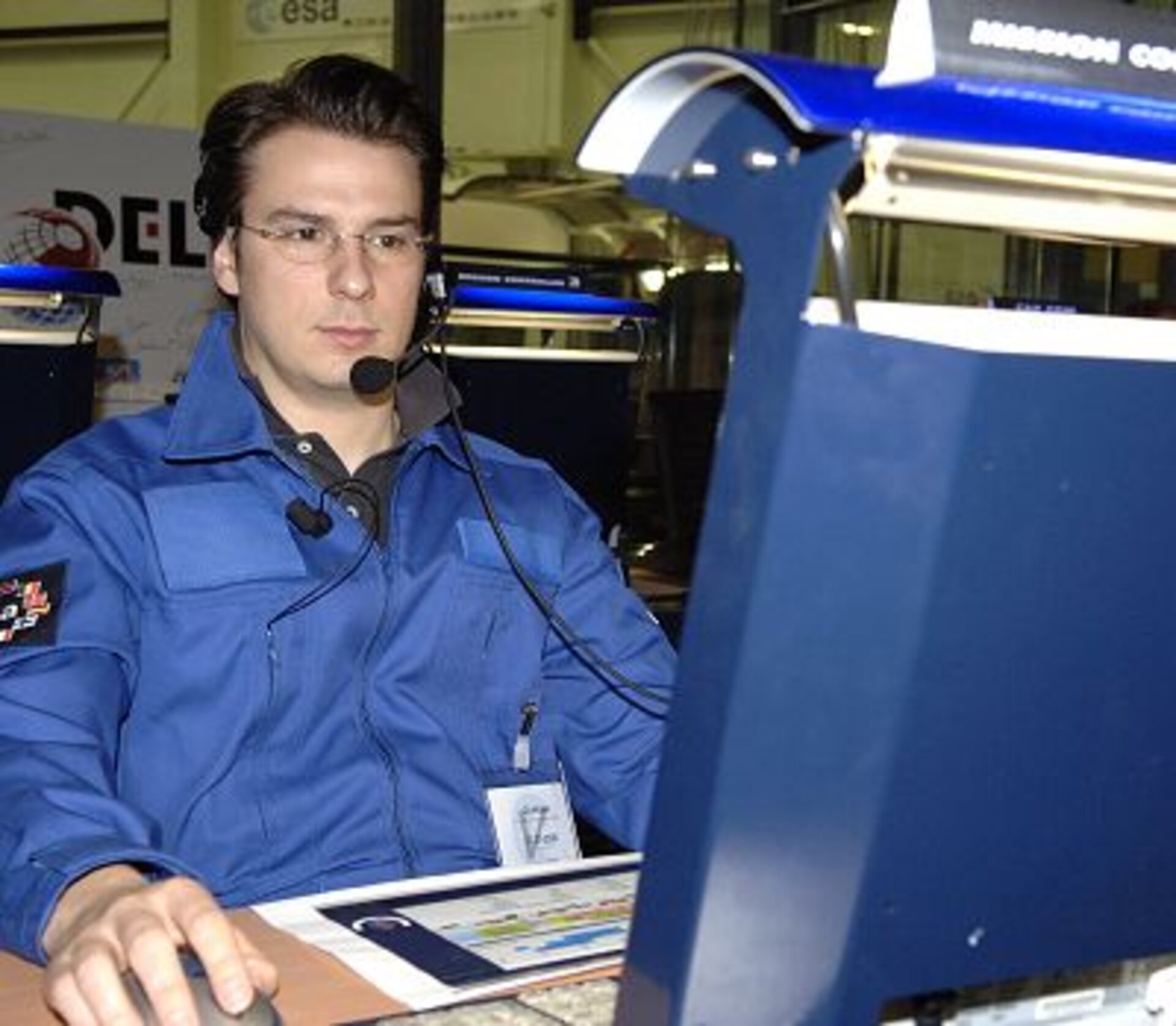First spaceflight familiarisation training held at ESA’s Erasmus User Centre
ESA is often visited by business consultants who advise the agency on all kind of topics. This time, however, Martin Petry, partner, Damir Maras, senior manager, and Chris Huber, manager at PricewaterhouseCoopers, found themselves on a completely different type of business trip.
It would not be a trip on which they would give advice. On the contrary, they would receive a very specific training to familiarise with European spaceflight. This training opportunity was offered by ESA as a prize for an internal innovation competition of PricewaterhouseCoopers, which the three consultants had won.
Not quite sure what to expect, at the beginning the three found themselves wearing astronaut training suits in the High Bay of the Erasmus User Centre, which normally hosts scientists, engineers and students who use ESA’s research facilities and platforms such as the International Space Station. They now had to swiftly come to grips with a completely different world called spaceflight, which they had only known so far from the evening news and other TV productions.
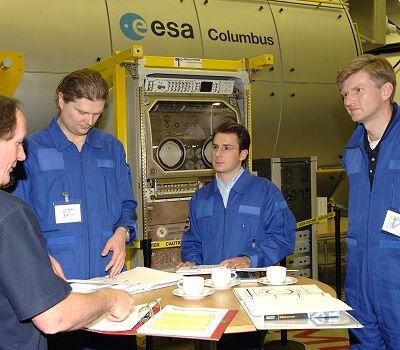
In an introduction to the five microgravity science platforms that are under the responsibility of ESA’s Directorate of Human Spaceflight, Microgravity and Exploration they learned that the absence of gravity is not a feature of space but of a particular motion and thus can be created also on Earth. A simple free fall does the trick.
In the High Bay of the Erasmus User Centre a free falling capsule in the twelve-meter high drop tower creates weightlessness for 1.6 seconds. This is enough time not only to demonstrate that equally strong magnets rearrange in equal distance when dropped and gravity is removed, but it is also enough time to demonstrate basic scientific and engineering procedures in for example combustion processes or biological cell adaptation.
The principle of free fall is also responsible for the 22 seconds of microgravity a parabola of an Airbus A300 provides. The advantage being that in an Airbus the experimenters can stay with their experiment and intervene if necessary to change the experiment hardware or parameters. Thereby they are able to experience weightlessness themselves. All of the three consultants would have liked to share that weightless experience with the experimenters.
Followed by a short introduction into Sounding Rockets, unmanned Foton missions and the International Space Station, the programme got more into the details of spaceflight. A launch of a Russian Soyuz rocket was presented in a 3D photo slide show and orbital mechanics were discussed in detail in order to understand better why it takes only eight minutes to reach a low-earth-orbit but it then takes two days to reach the International Space Station for docking.
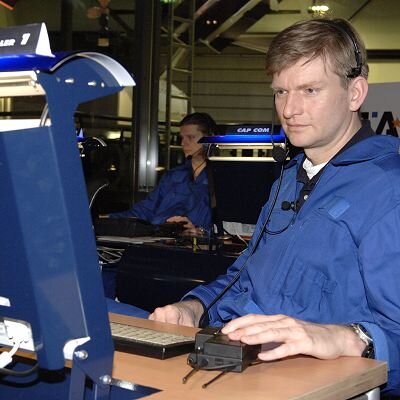
Highlight of the first day was undoubtedly the 3D virtual reality simulation of the International Space Station. This real-time simulation is used to familiarise potential users of the experiment facilities with the interior and exterior of the Station. It allows the viewer to fly inside and around the ISS in three dimensions.
Today Martin Petry and his colleagues could become a virtual astronaut and fly themselves around the ISS. To handle and to control this flight with a ‘spacemouse’, which is a joystick with six-degrees of freedom is not easy at all in the beginning but they managed well and had fun exploring all the features and different elements and modules of the ISS.
The emphasis of the second day lay in hands-on training. The day started with the motto ‘Living in Space: Eating, sleeping and everything else’. Standing in the full-scale mock-up of the Zvezda module provided the spaceflight familiarisation trainees with the opportunity to touch and experience real spaceflight equipment.
The Zvezda module in the Erasmus User Centre is furnished with an engineering model of the dining table and the toilet. Both are identical to the hardware on the ISS. The three consultants could touch real space food and could see how it is used on the ISS. Quite to their surprise they had to find out that ‘special’ space food, as a category in its own right does not exist. Astronauts rather enjoy the same kinds of food that we also eat on earth. The main difference is however, that the food is processed and treated differently and in a certain way to make it storable for a longer time.
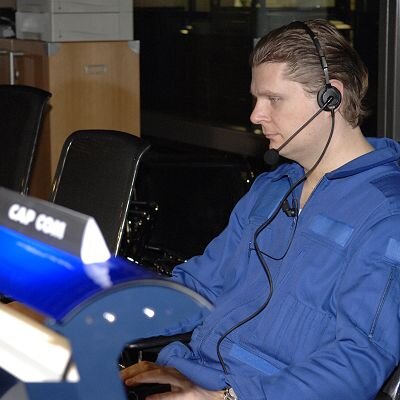
They also got an answer to the question of how the toilet business does work out without gravity in a demonstration of the functionality of the engineering model. Moreover, seeing and standing inside the sleeping cabins gave them a good impression of what sleeping in weightlessness might be like.
A mission control simulation in a real mission control centre in which the trainees took active roles in executing mission controller functions rounded up the second day. For this purpose the mission control centre that was used during several European missions to the International Space Station was reactivated with the only difference that it was not connected to the ISS but to the Columbus mock-up in the High Bay of the Erasmus User Centre.
In there an astronaut played by one of the User Centre staff was ‘floating’ and executed experiments upon the requests of the mission control trainees, who were linked via live video and audio connection into the Columbus module. All of them followed procedures similar to the ones used in real mission control operations including fading images and time-delayed radio communication.
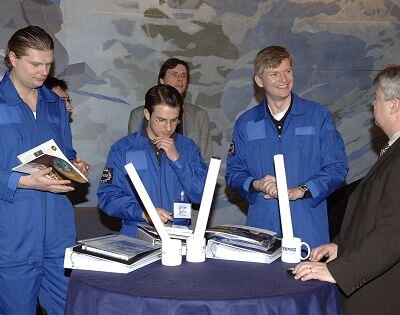
It soon became apparent to them that mission control is not an adventure video game but a very controlled and calm environment where the main task is to follow and execute procedures. Surprises are rather the exception and are also dealt with in a procedural way to avoid any confusion and mistakes.
A visit to Jules Verne, the Automated Transfer Vehicle (ATV) re-supply spaceship that is currently undergoing final testing in the test facilities close to the Erasmus User Centre ended the programme.
At the end of the day Martin Petry, Damir Maras and Chris Huber appreciated the training very much and showed some pride in receiving their participation certificates. “We have been learning and experiencing a lot about spaceflight and some of our stereotypes on this topic have been corrected”, said Martin Petry,
“These spaceflight familiarisation courses are tailor made for each new group”, explained Dieter Isakeit, the Head of the Erasmus User Centre, “therefore I am satisfied that we could meet your expectations and you found it interesting and worthwhile to come to ESTEC. We will use the experience gained with your group to design our future training courses.”
For more information, please contact:
Dieter Isakeit
Erasmus User Centre and Communication Office
Directorate of Human Spaceflight, Microgravity and Exploration Programmes
Noordwijk (The Netherlands)
Tel: +31 71 565 5451
Fax: +31 71 565 8008
e-mail: dieter.isakeit@esa.int


